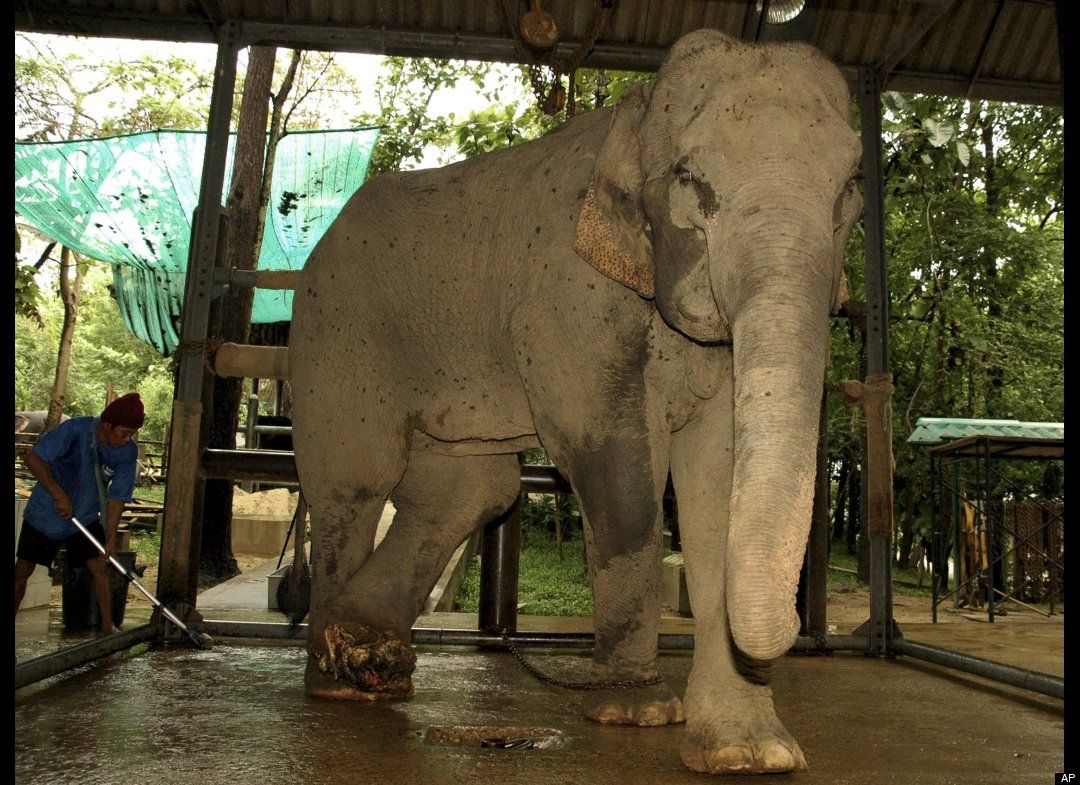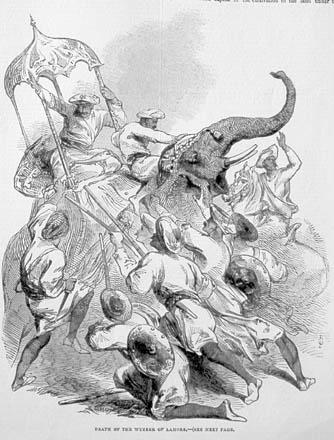
Mae Ka Pae is another victim of land mines.
The elephant was thought to have been allowed to cross the border into Burma, in order to find food; it was during this crossing that she stepped on the mine, which would have been left as a result of the conflict between the Myanmar government and ethnic minority rebels.
Friends of the Asian Elephant have experienced vets, who have been providing elephants in similar circumstances with artificial limbs. The first elephant to be fitted with an artificial leg was Mosha, in 2007.
Over the centuries, elephants have always had a subservient relationship with humans, from carrying royalty, used as an old style tank during times of war, being used as a mode of transport over long distances, hunted for their tusks for ivory, during temple festivals and blessing pilgrims and more recently in circuses performing tricks. Current day finds them being used for logging purposes, and, increasingly, as a huge tourist draw, with backpackers and families flocking to Thailand to ride on an elephant.

An elephant used during war time.
Sadly, the conditions the elephants are raised in for logging, circuses and tourist riding centres, are not shown in the happy tourist/happy elephant photos. Westerners dream of being able to ride an elephant, imagining bonding with these majestic animals. The truth is that in order to ‘tame’ these strong, wild animals, first, their spirit must be broken, this is done via the method of ‘Phajaan,’ where elephants as young as 4 years old are ripped from their mothers and suffer horrific torture until they are deemed to have had their ‘spirit broken.’ They are tied and bound by ropes and chains and contained in a pen where they cannot move, they are held there for days and weeks, usually denied food and water until their mahout has decided they are ready.
Once the elephant is ‘trained’ they are then suitable for unsuspecting tourists to ride upon, feeling they are helping save the elephant, as usually the places they ride the elephants will state they are ‘saving’ the elephants, or are an ‘eco-park.’ Despite their size, carting around up to four people, plus over sized saddle on their back has a detrimental effect on the physical wellbeing of these intelligent animals.
Even after the Phajaan, the torture for the elephant does not stop there, the ‘ankus,’ a short stick with sharp curved hook at the end, is used to control the elephant. The hook is dug into the most sensitive parts of the elephants’ body, such as, behind the ear, on the forehead and trunk area. You just need to get close to an elephant after a show at a zoo to see the nick wounds on their face. Some zoos will try to hide the hook on the end of the stick by placing a brush on the end, but the hook is still there.

Various ankuses used when training elephants. Source: www.upali.ch
Once an elephant is deemed too old, too unwell to work in the logging industry or the tourist industry, they are no use to the mahouts who have ‘trained’ them. For the lucky ones, in the north of Thailand, they may go to Lek’s elephant rescue, Elephant Nature Park. It is here that elephants can retire in peace, not having to be ridden on again, to ease their aching backs and hopefully heal their psychological wounds. As we know, elephants are social animals, with complex relationships, that have been known to mourn their dead and care for each others’ children. The emotional effects of the treatment they have received throughout their life runs deep.
So, let’s hope that Mae Ka Pae is able to retire now, and that the talented vets at Friends of the Asian elephant can help her to walk free of pain and unhindered, like Mosha.
If you are travelling to South East Asia, do the elephants a favour, and don’t support the elephant ride or mahout training centres, there is a dark secret behind the happy tourist photos. Once the demand stops, the supply will stop.
No comments:
Post a Comment